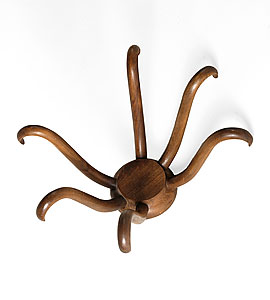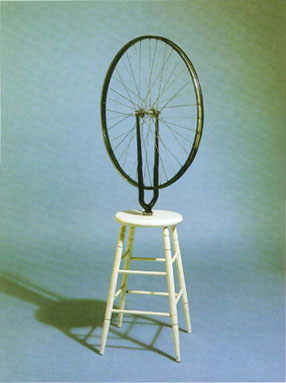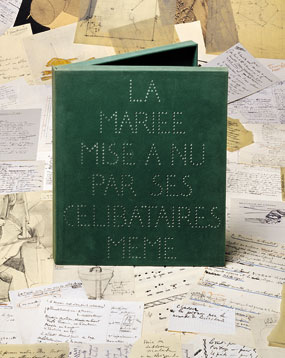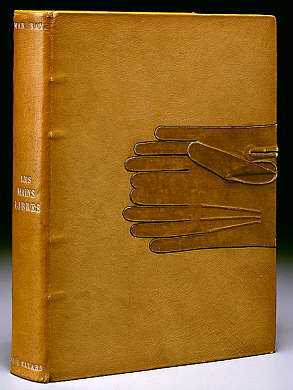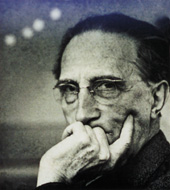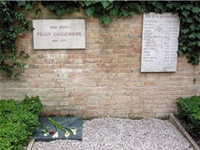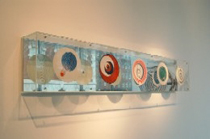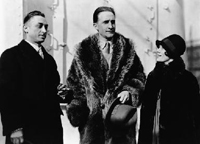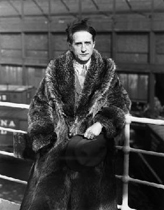Duchampian News & Views
-
Spiritualism and Nihilism: The Second Decade?
December 15, 2008 "Duchamp is, in effect, the first conceptual artist, and the readymades are the first conceptual works of art. As he said in 1946, he "wanted to get away from the physical aspect of painting. I was more interested in recreating ideas in painting. For me the title was very important." He finally abandoned painting for readymade objects. The question is what ideas they recreated. He wanted art to be an "intellectual expression" rather than an "anim.. read more...
Excerpt from A CRITICAL HISTORY -
Unmaking the Museum: Marcel Duchamp’s Readymades in Context
December 15, 2008“Bicycle Wheel was not intended to be a remarkable piece of art, but rather a personal experiment. However, just because the initial idea behind it wasn’t art-oriented doesn’t mean that Duchamp didn’t whole-heartedly embrace the wonderful uproar and contradictions it later acquired when becoming designated as art.”
read more... -
Novel Appearances: French Book Art at the New York Public Library
December 15, 2008 “It’s as though a bomb were inadvertently dropped on the essence of book art during the first World War; it emerged on the other side fundamentally changed, spinning off in many directions. Dada shook up the established ideas of art and literature, especially in Paris where the movement was well-grounded in the written word, with poets like André Breton, Tristan Tzara, and Paul Éluard at the helm. The new methods of making art and creating poetry mir.. read more... -
The accidental surrealist: Mary Reynolds, American in Paris
December 15, 2008 “Warm Ashes: The Life and Career of Mary Reynolds is astonishing. Why haven't we heard of Mary Reynolds before, in the same breath as Anais Nin and Djuna Barnes? Perhaps because she did not write. She bound books. In a time when the world was small enough that all the artists seemed to know each other, Mary Hubachek Reyholds, born in 1891, lived in Greenwich Village with her soulmate husband, enjoying Bohemia. He enlisted in WWI sixteen months into their marriage, and d.. read more... -
Myriad exhibits of conceptualism :
December 15, 2008
Is it art? Nuit Blanche brings question to the fore"If Conceptual Art was about de-emphasizing the art object, it’s easy to trace that notion to a much earlier time. To 1917, in fact, when Marcel Duchamp famously exhibited a porcelain urinal and signed it ‘R. Mutt.’ It was a sudden reduction of the idea of art. Duchamp was saying for the first time, with a shocking visual pun, that, with the force of idea behind it, anything could be art."
read more... -
Peggy Guggenheim & Gallery Jeune
November 25, 2008 "Peggy Guggenheim opened the gallery Guggenheim Jeune in London in January 1938 ... The gallery on 30 Cork Street, next to Roland Penrose's and E. L. T. Mesens' show-case for the Surrealist movement, the London Gallery...Marcel Duchamp, whom she had known since the early 1920s, when she lived in Paris with her first husband Laurence Vail, was taken on to introduce Peggy Guggenheim to the art world; it was through him that she met many artists during her frequent visits t.. read more... -
#13 VERTIGO : Marcel Duchamp and Mark Titchner
October 9, 2008" Featuring Marcel Duchamp’s Rotoreliefs and Mark Titchner’s Ur Text…
Years later I first came across Marcel Duchamp’s Rotoreliefs and of
read more...
course the connection was made. This was the progenitor of my beloved
gyrating friend whose commercial failure at alley F, Stand 147 of the
1935, 33rd Concours Lepine, had at least been slightly alleviated by
the mass-market familiarity of the Vertigo design." -
DADA part two: Marcel Duchamp
October 8, 2008 "Everyone who hates art, or what art has come to symbolize in 'modern society' today and in history can look to Marcel Duchamp. This of course, is a contradictory statement that Duchamp would not approve of. His questions and art-from his submission of a bicycle wheel as an art piece (which is currently at the MOMA in New York), to his Mona Lisa with a moustache, and the cubist, 'Nude Descending a Staircase,' Duchamp's works are varied, layered, complicated, touching yet.. read more... -
Art appreciator
October 7, 2008“Since the days of Duchamp and warhol, art can be understood in two ways: Art is a way of doing things, art is a way of seeing things.”
read more...




